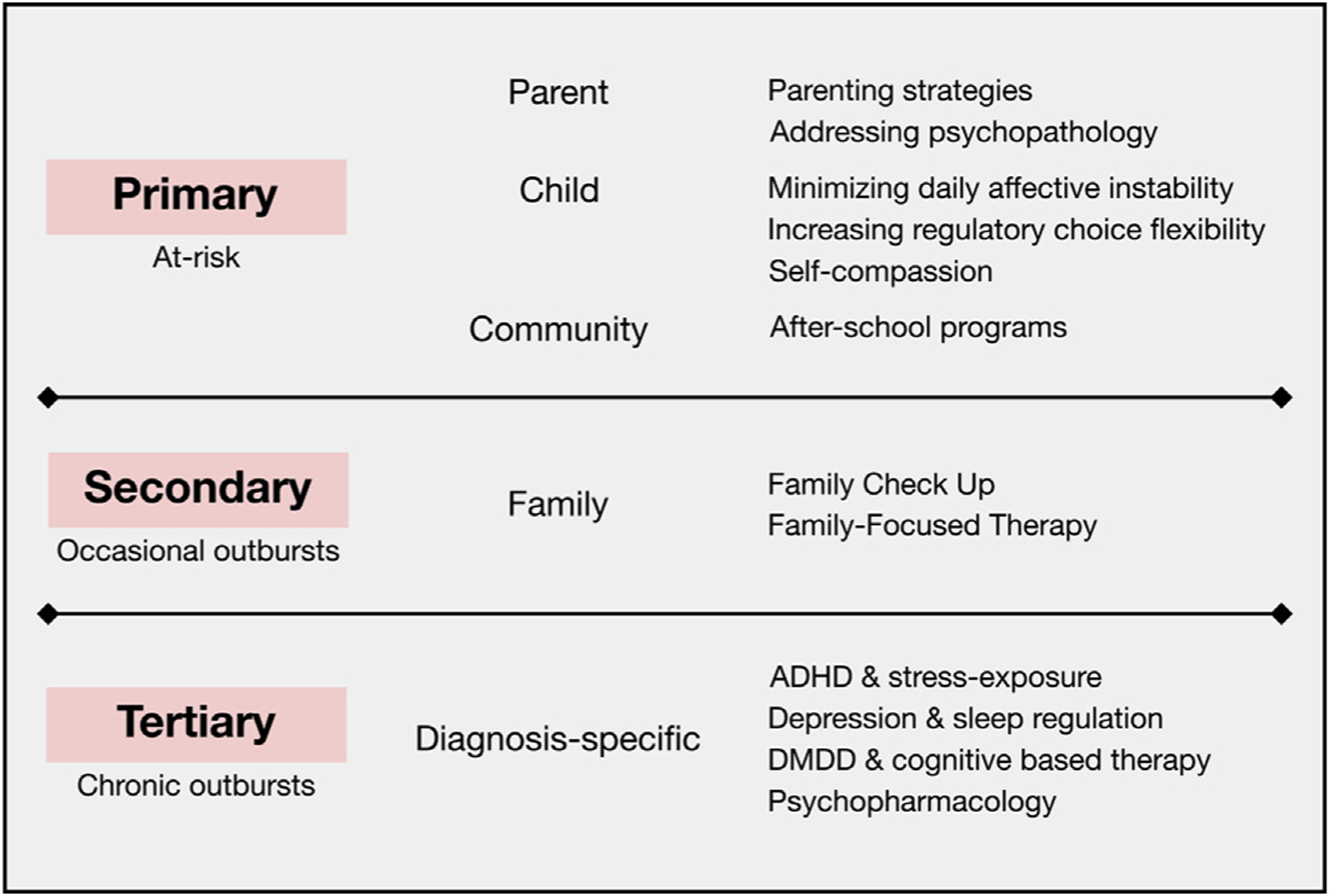Fig 1.

Summary of the available evidence for primary, secondary, and tertiary prevention strategies for irritability and temper outbursts. Primary prevention aims to decrease the risk for disorder onset in susceptible populations through parent, child, or community interventions. Secondary prevention strategies, targeting children with occasional outbursts, are currently predominantly family oriented. Tertiary prevention is diagnosis specific because children with chronic outbursts often are already diagnosed with mental illness. ADHD, attention deficit hyperactivity disorder; DMDD, disruptive mood dysregulation disorder.
